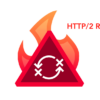Malicious actors have started abusing the Portmapper service to amplify their distributed denial-of-service (DDoS) attacks and hide their origin, Colorado-based telecommunications company Level 3 Communications has warned.
RPC Portmapper, also referred to as rpcbind and portmap, is an Open Network Computing Remote Procedure Call (ONC RPC) service designed to map RPC service numbers to network port numbers. When RPC clients want to make a call to the Internet, Portmapper tells them which TCP or UDP port to use.
When Portmapper is queried, the size of the response varies depending on the RPC services present on the host. In their experiments, Level 3 researchers obtained responses of between 486 bytes (amplification factor of 7.1) and 1,930 bytes (amplification factor of 28.4) for a 68 byte query. The average amplification size obtained by Level 3 in tests conducted across its network was 1,241 bytes (18.3 amplification factor), while in the actual DDoS attacks seen by the company the value was 1,348 (19.8x amplification).
Malicious actors can use Portmapper requests for DDoS attacks because the service runs on TCP or UDP port 111. Since UDP allows IP spoofing, attackers can send small requests to Portmapper using the target’s IP address and the server sends a larger response to the victim.
Level 3 has observed an increasing number of DDoS attacks leveraging this vector over the summer, with the largest attacks taking place in August 10-12. The attacks were mainly aimed at the gaming, hosting, and Internet infrastructure sectors.
Organizations are advised to keep an eye out for potentially malicious Portmapper requests, but Level 3 has pointed out that for the time being the global volume of Portmapper-based traffic is still small compared to other UDP services abused in DDoS attacks, such as DNS, NTP and SSDP.
“Portmapper is so small it barely registers as the red line at the bottom of the graph. This shows, despite its recent growth, it is a great time to begin filtering requests and removing reflection hosts from the Internet before the attack popularity grows larger and causes more damage,” Level 3 said in a blog post.
“We recommend disabling Portmapper along with NFS, NIS and all other RPC services across the open Internet as a primary option. In situations where the services must remain live, firewalling which IP addresses can reach said services and, subsequently, switching to TCP-only are mitigations to avoid becoming an unknowing participant in DDoS attacks in the future,” experts advised.
There are several services that malicious actors can abuse for DDoS attack reflection and amplification. Researchers revealed at the USENIX conference last week that vulnerable BitTorrent protocols can also be leveraged for DDoS attacks.
DDoS attack trends for Q2 2015
Akamai published today its Q2 2015 State of the Internet report. According to the company, the number of DDoS attacks more than doubled compared to the same period in 2014. The content delivery network (CDN) also warned that mega-attacks are on the rise, with a 50 percent increase in attacks exceeding 100 Gbps compared to the first quarter of 2015.
Akamai’s report shows an increase in most areas, including a 17 percent increase in application layer attacks, a 6 percent increase in infrastructure layer attacks, and 15 percent and 24 percent increases in average peak bandwidth and volume, respectively.
On the other hand, the company said it observed a 17 percent decrease in the average attack duration — from 24.82 hours to 20.64 hours. Akamai also noted that while the average peak bandwidth and volume increased compared to the previous quarter, they are significantly lower than the peak averages observed in Q2 2014.
Just like in the first quarter of 2015, China topped the DDoS attack sources chart.














